Introduction
There are many different theatrical hair and makeup products on the market. In this section, we will provide a general alphabatized guide of products that we recommend having on-hand.
Makeup Products
Airbrush
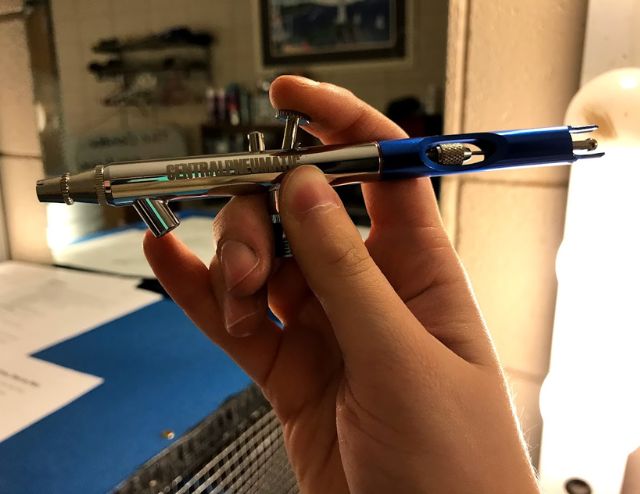
This is an airbrush used to create an even layer of paint over large surfaces of an actor’s body. It can also be used to create the illusion of texture on the body. The makeup application can be bold or subtle, and a variety of colors, patterns, and opacities can be achieved.
Airbrush Paint Containers
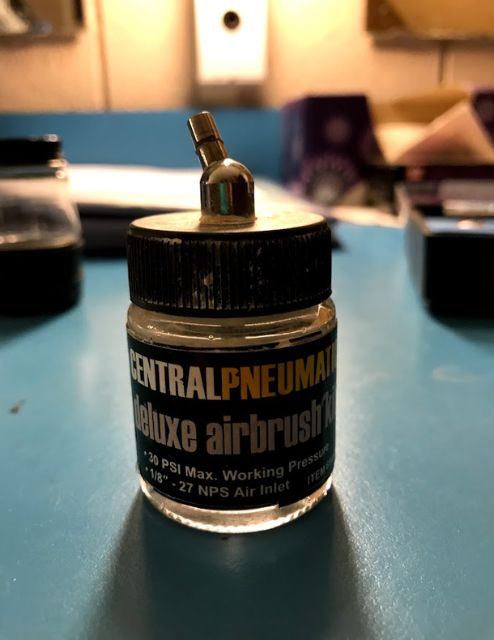
These are used to hold airbrush paint throughout the airbrushing process. Once the production has been completed for the night, these paint containers should be sealed or cleaned to prevent the drying and solidifying of the airbrush paint. Prior to each use, these containers should be shaken if paint is left overnight.
Airbrush Cleaning Brush
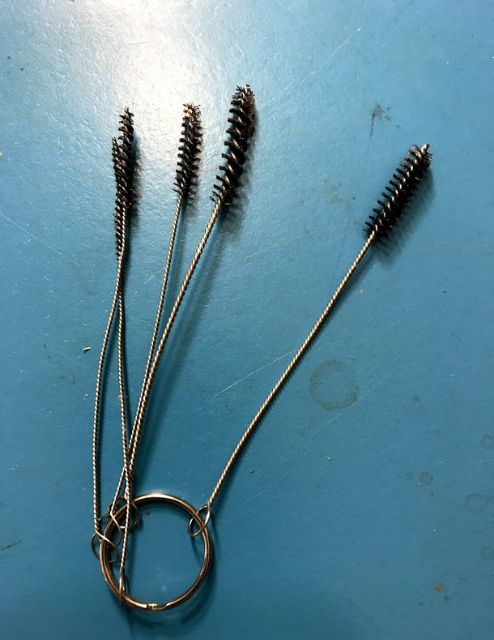
These brushes are used to clean the airbrush's components, including the airbrush paint containers. It is important to have a variety of sizes available for the many small pieces within the airbrush itself.
Air Compressor
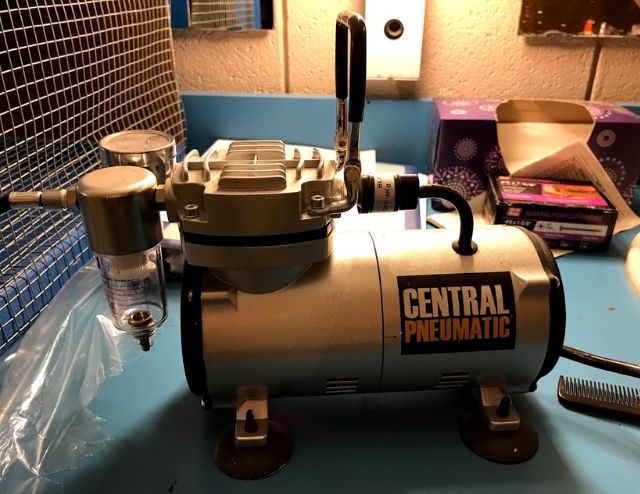
This compressor is used to force air through the airbrush. Air compressors can be used for makeup and non-makeup purposes, so always be sure to check the air compressor's PSI levels to ensure the force of the airflow is skin-safe.
Ash Powder
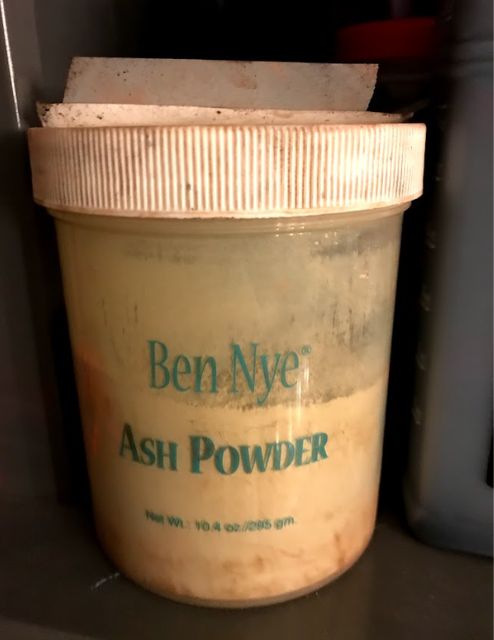
This is a type of powder that can be applied with a brush to produce a dust or ash effect. It can also be used with a powder puff to set creme makeup. When used with a powder puff, it gives the general appearance of sallow, sunken, and malnourished skin. That is why this product is excellent on performers who are intended to appear poor or haggard.
Charcoal Powder

This is a type of powder that can be applied with a brush to produce the effect of a person having gotten coal smudged on them. This type of powder is good on actors who are meant to look poor and haggard, or who are meant to look like they are doing manual labor. Be aware that this product will run when mixed with sweat or water.
Creme Foundation
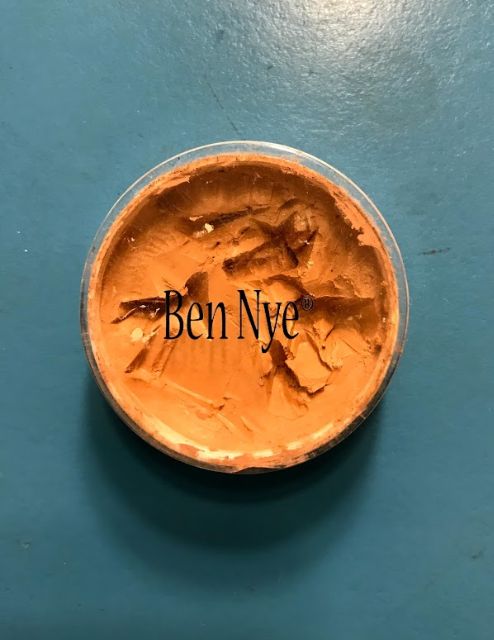
A type of cream paint used as a base foundation in theatrical makeup. The hues vary to accommodate different skin tones. Colors of cream paint can be layered on top of cream foundation and blended as desired. It should be powdered when in place.
Creme Kit
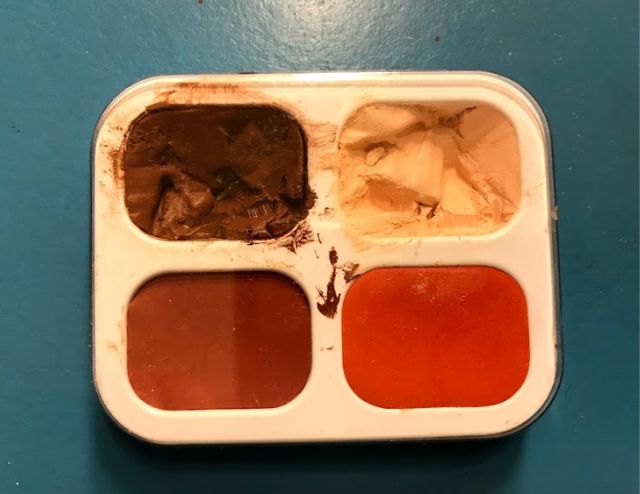
This is a kit filled with creme paint that aligns with a specific skin tone. It includes highlight, contour, blush, and lip color. It is typically sold with a separate foundation and powder.
Creme Paint
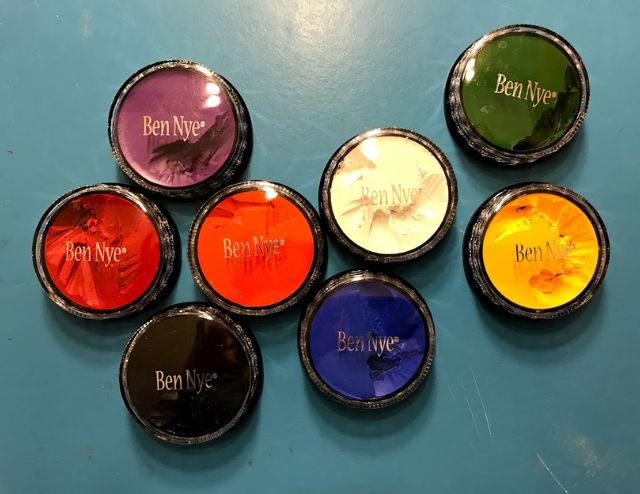
This paint has a creamy consistency and does not set without powder. It comes in a variety of colors including neutral, skin-tone, and vibrant shades. These paints can also be mixed together to create new colors. If used by multiple performers or crewmembers, we recommend using a palette knife to remove a small portion of these paints. This prevents the risk of contaminating the paint pots.
Dirt Powder
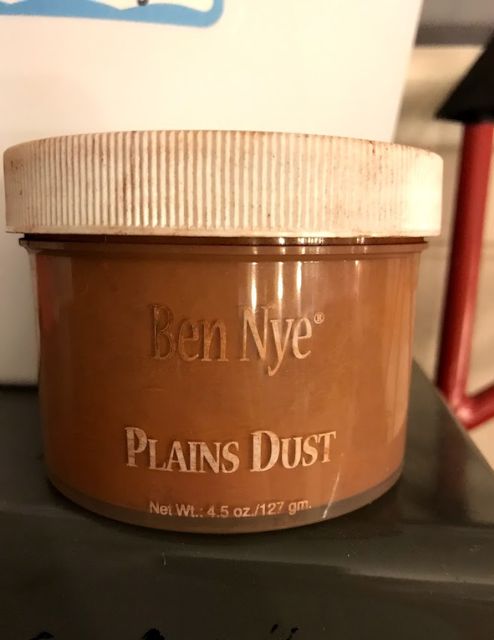
This is a powder product resembling dirt. It can be applied with a brush to give the appearance of dirt splotches and streaks. Used sparingly, it can be used to create freckle effects. However, be aware that this product will run when exposed to sweat or water.
Eye / Eyebrow Pencil

Eye pencils are a must for performers. Liquid, gel, pen, or pencil liners are up to personal preferences. However, we find that a brown or black eyeliner pencil is usually sufficient for both the eyes and the eyebrows.
Eye Pencil Sharpener
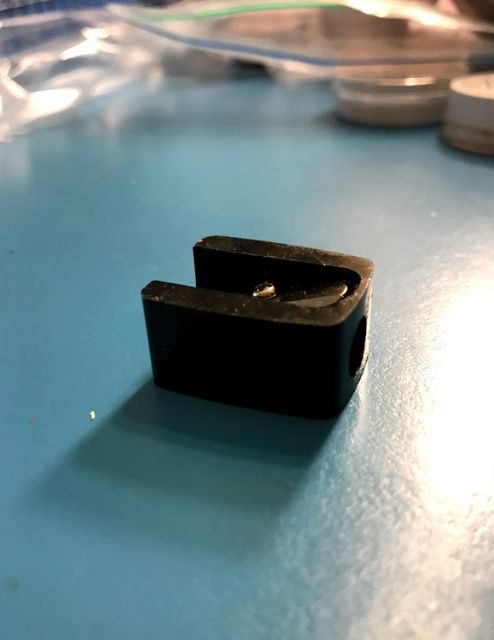
It is imperitive that eye pencils are only sharpened with eye pencil sharpeners. Do not use a normal pencil sharpener for your eye makeup! You do not want to run the risk of foreign objects, such as pencil lead, getting on or around the eye area.
Eyeshadow
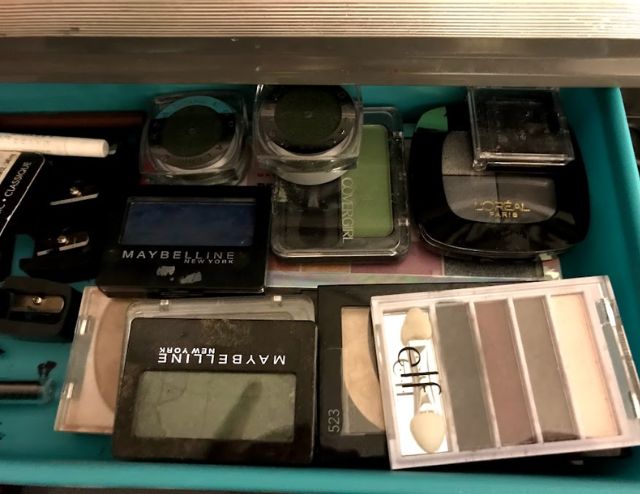
We find that loose or pressed powders are sufficient for most theatrical performances. Expensive products are not necessary; sometimes excellent products can be found at local drugstores. Focus on finding the right colors for the character, regardless of where the product comes from.
Fair Powder
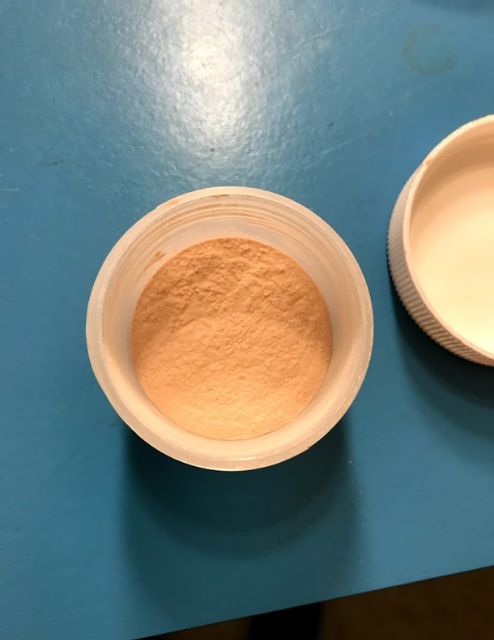
This powder typically comes with creme kits. However, it can be purchased separately. It is recommended for fair or medium skin tones because it has light pigmentation. This means that it will slightly alter the coloration of whatever creme paint it sets. Thus, be careful that you do not apply this product too liberally.
Liquid Latex
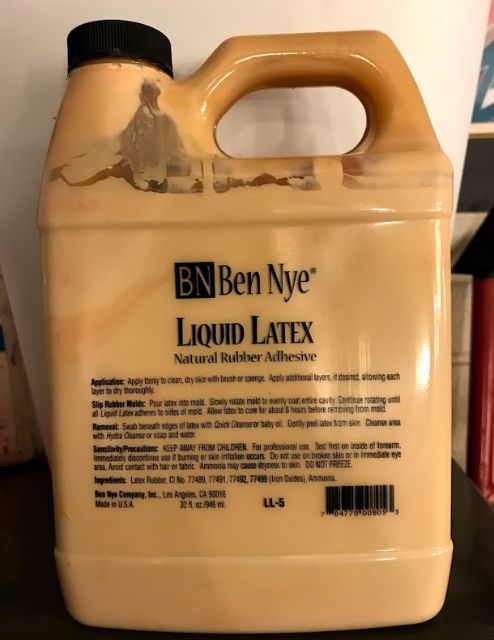
This is an adhesive that can be used on the face and body to apply bald caps and other prosthetics. Be aware that latex can damage the skin and will not come out of costumes, hair, or eyebrows. Use with caution, and remove with a latex remover.
Alternatively, this product can be mixed with flour to create a paste used for prosthetic making. Consider making your prosthetics with latex, allowing them to dry, and then adhering them with Pros Aide or Spirit Gum.
Palette

We recommend using a plastic or metal palette for creme paint application. This allows paint to be used liberally without contaminating communal paint containers.
Palette Knife

We recommend using a plastic or metal palette knife to remove creme paint from communal pots to ensure that no cross-contamination occurs.
Powder Puff
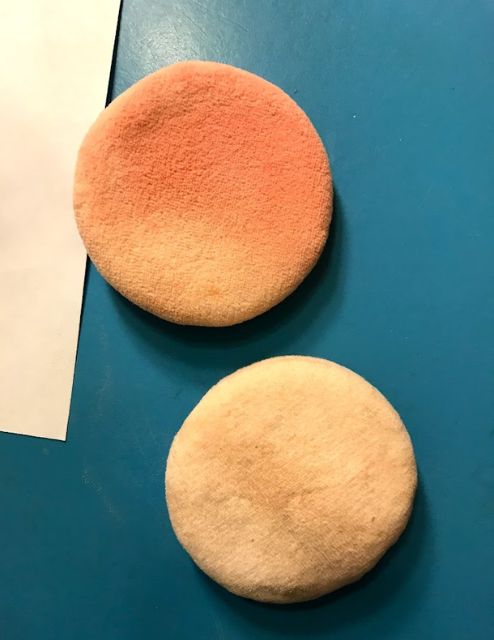
Use a powder puff alongside any neutral or colored powder to set creme makeup. These tools typically accumulate a lot of makeup and powder buildup. Remember to wash them frequently with soap and water.
Spirit Gum
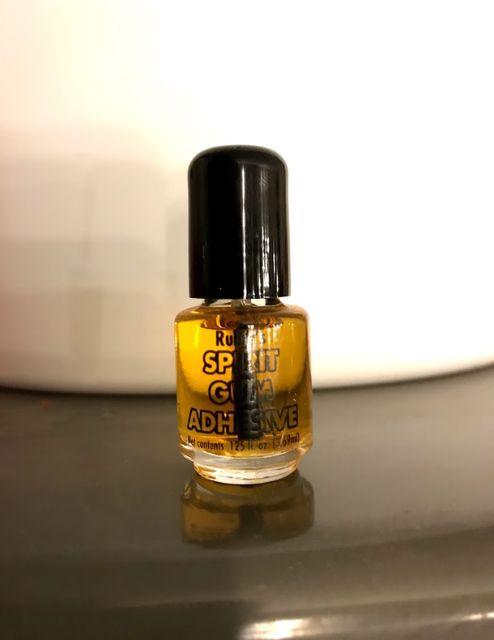
This is a type of body adhesive that is great for gluing prosthetics and bald caps onto the face. It can also be used to glue down wigs (if you get an okay from the director). This product is one of the most common facial adhesives. Note that it requires spirit gum remover to remove, especially if you intend to re-use the prosthetic.
Stage Blood

Stage blood comes in a variety of styles and colors. It is typically made with a mixture of cornsyrup, dye, and water. It can be placed in bottles, tubes, containers, and breakable pills to create interesting bleeding visuals on stage. If you are using blood in the mouth area, ensure you have a food-safe blood for the performer to use. Also consider that stage blood is difficult to clean and may stain skin, hair, or constumes. Test these products before productions to ensure that you are equipped to handle the formula you are working with.
Stipple Sponge

Use a stipple sponge with creme paint, water-activated paint, and fake blood to create interesting visual effects. This is one of the most versatile tools you can have in your arsenal. Make sure you have one on hand!
Tooth Paint
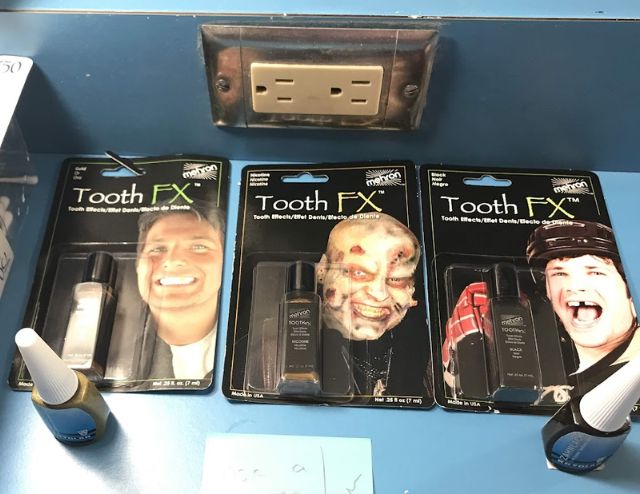
Tooth paint is valuable for productions that have performers with missing teeth, tooth gaps, gold teeth, or rotting teeth. Make sure the performer's teeth are clean and dry before applying with a brush or q-tip. While teeth tend to be viewed as small details, they can have great visual impact, so consider using one of these mouth-safe products in the opportunity arises.
Translucent Powder
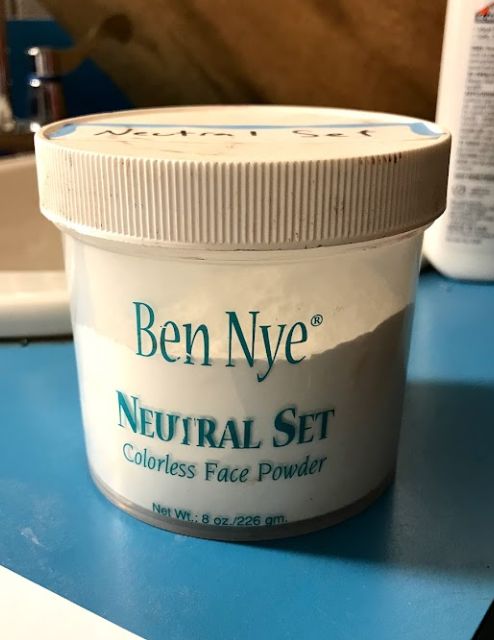
This powder has no pigmentation, and it will not change the color of the makeup it sets. It is excellent for performers with colorful makeup, as well as performers who sweat a lot during productions. Use with a powder puff for the best results.
Water Activated Paint

These are paints activated and removed with water. They can be applied using a paintbrush, wedge sponge, stipple sponge, or even the fingers. They dry down but may sweat off, and they come in a variety of colors from a variety of brands. The paints can be mixed together to create a new color. Some of the paints are UV activated. If you apply glitter to the paint when wet (only use cosmetic grade glitter, never craft store glitter on the face), it will stick when the paint dries.
Wedge Sponge
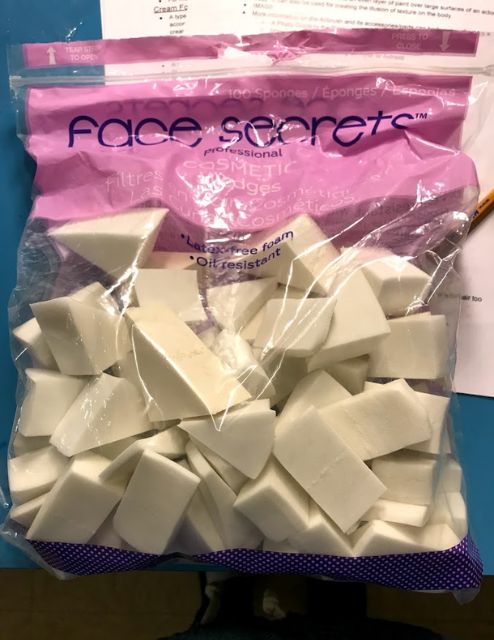
These sponges can be used with creme paint or water-activated paint to create solid or patterned makeup looks. While they do not look like much, wedge sponges are important tools to have on-hand.
Hair Products
Bandage Wrap
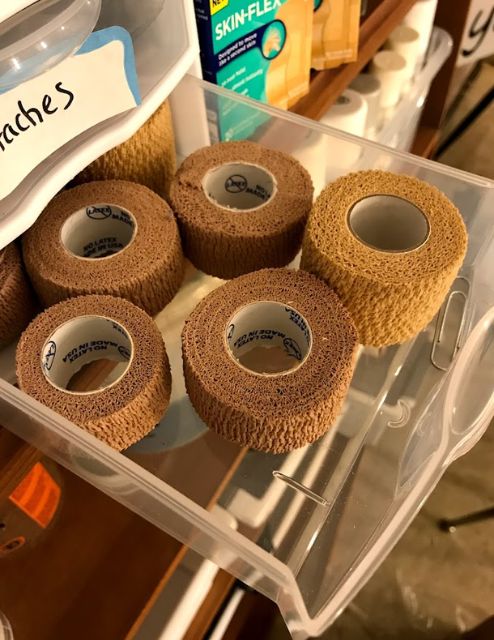
These self-adhesive bandages are used to help pin wigs on performers with short hair. If you are using these products, ensure that the rolls on-hand are long enough to wrap around the head several times.
Bobby Pins

These are used to pin back hair. Put the flat side facing out of the hair and secure tightly. These can be used in wigs to pin back the hair, but they should never be used to pin a wig to the head.
Curling Iron
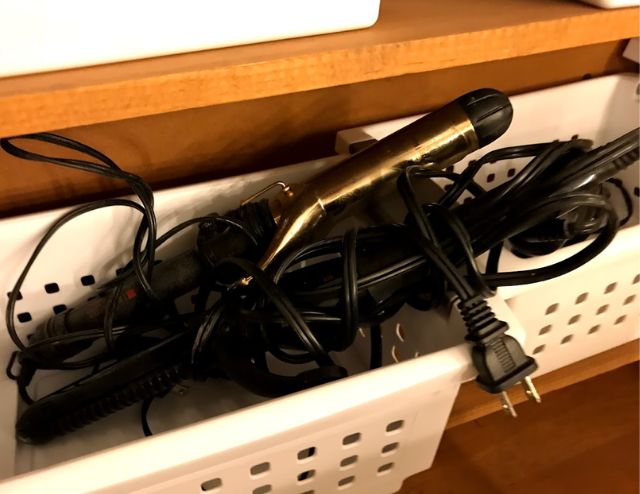
Curling irons are valuable to have for quick curled hairstyles. Note that they should not be used on synthetic wigs.
Hair Color Spray
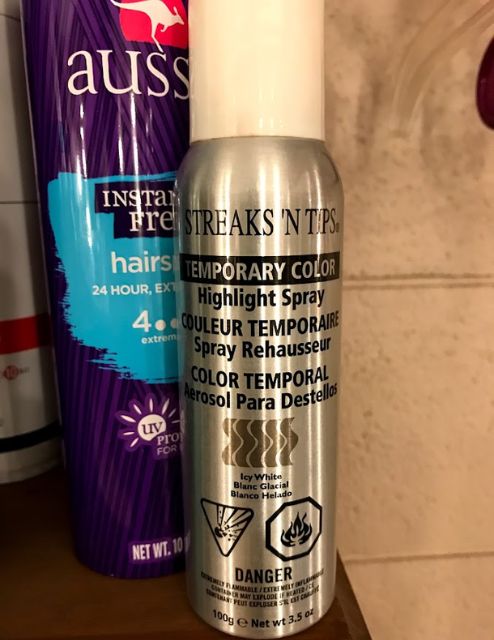
This is hairspray that has a specific color to it. Spraying it will coat anything it touches in that specific color. Use this to create grey old age looks or to change a performer’s hair color for a particular role. This should wash out with water. Beware! This product can also sweat off.
Hair Dryer

Use this device to dry human and synthetic hair during products. This is useful for both performers and wig stylists to have on-hand. Synthetic wigs can be styled with hair dryers as long as they are not too hot.
Hair Gel
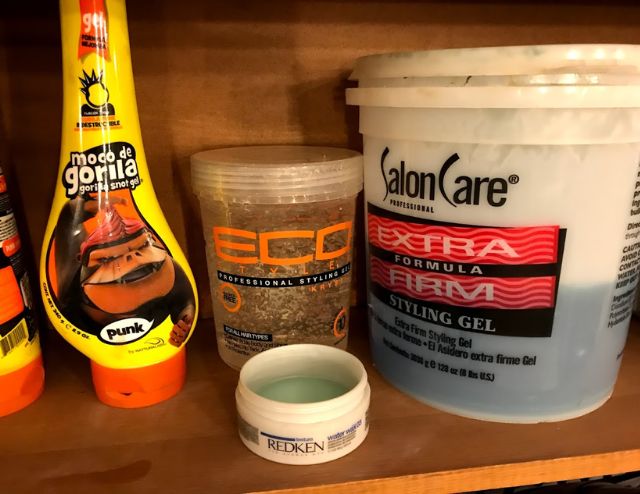
Use these products to ensure that performers' hair stay in place for the entirety of the production. Be aware that hair will be painful to touch or brush if extensive product is added.
Hairspray
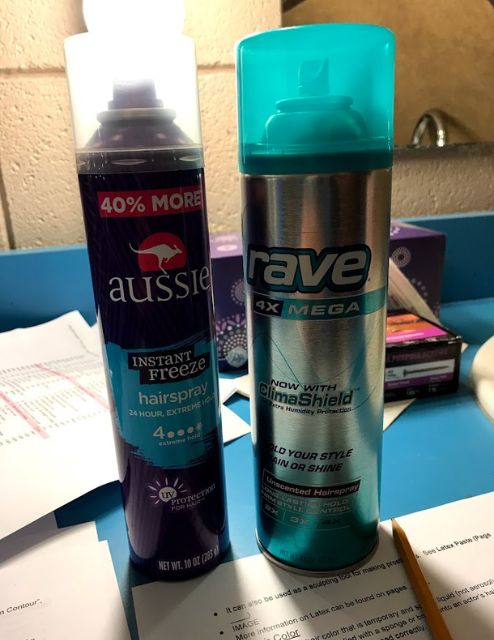
Keep extra strength hairspray on hand during productions for hair, wig, and makeup looks. Hairspray can be used to set makeup, particularly if the performer sweats profusely. Hairspray can also be used on synthetic hair wigs to help styles stay in place.
Liquid Hair Color
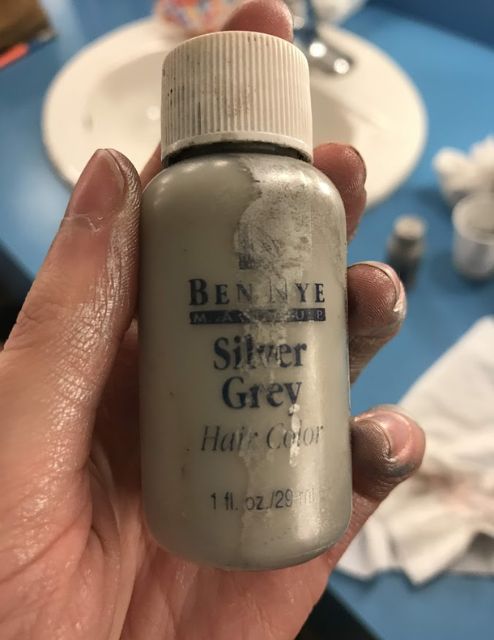
This product is used to create the appearance of greying hair. It can be streaked through the hair to give a salt-and-pepper effect. Be aware that it will spread when touched if it is not sprayed down. It will wash out with ease.
Wig Cap
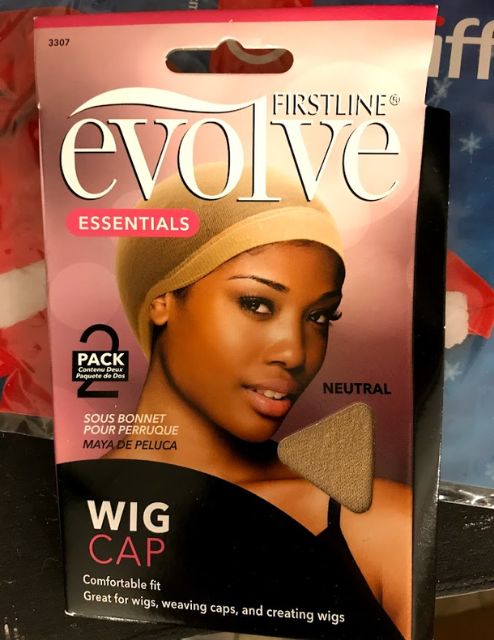
Use wig caps to encase pincurls or bandage wraps before wig applications. Microphones can be pinned into wig caps to keep them in place under the wig.
Wig Head / Wig Block
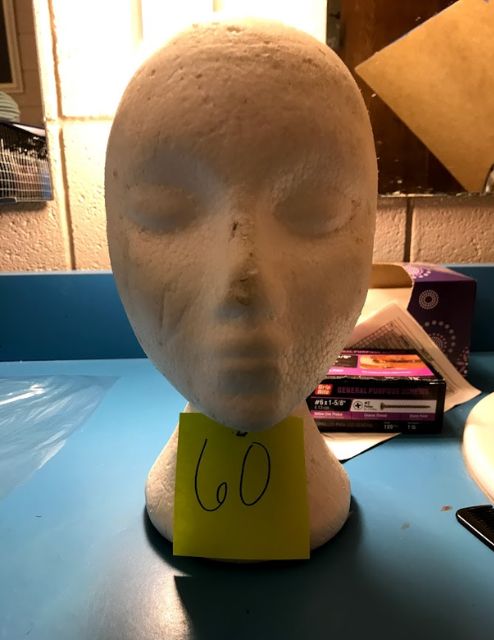
Use wig heads (styrofoam) or wig blocks (wood) to store wigs during productions. Wigs should be pinned to wig heads/blocks when not on a performer's head. These blocks not only preserve the wig's style, but they allow the hair to sit on the head in ways that are easier to re-style. Note that the foam heads are susceptible to more damage.
Wig Pins
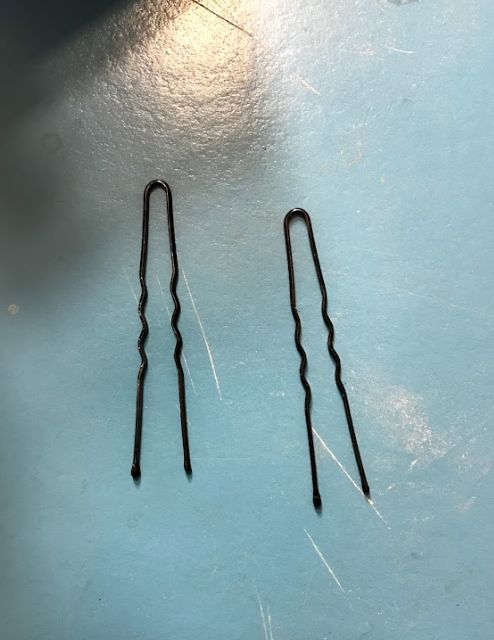
These pins are wider than bobby pins. They are used to pin wigs into pincurls (through a wigcap) and pin microphones into wigcaps. Wig pins can also be bent with pliers to pin hats and headpieces into wigs or hairstyles with ease.
